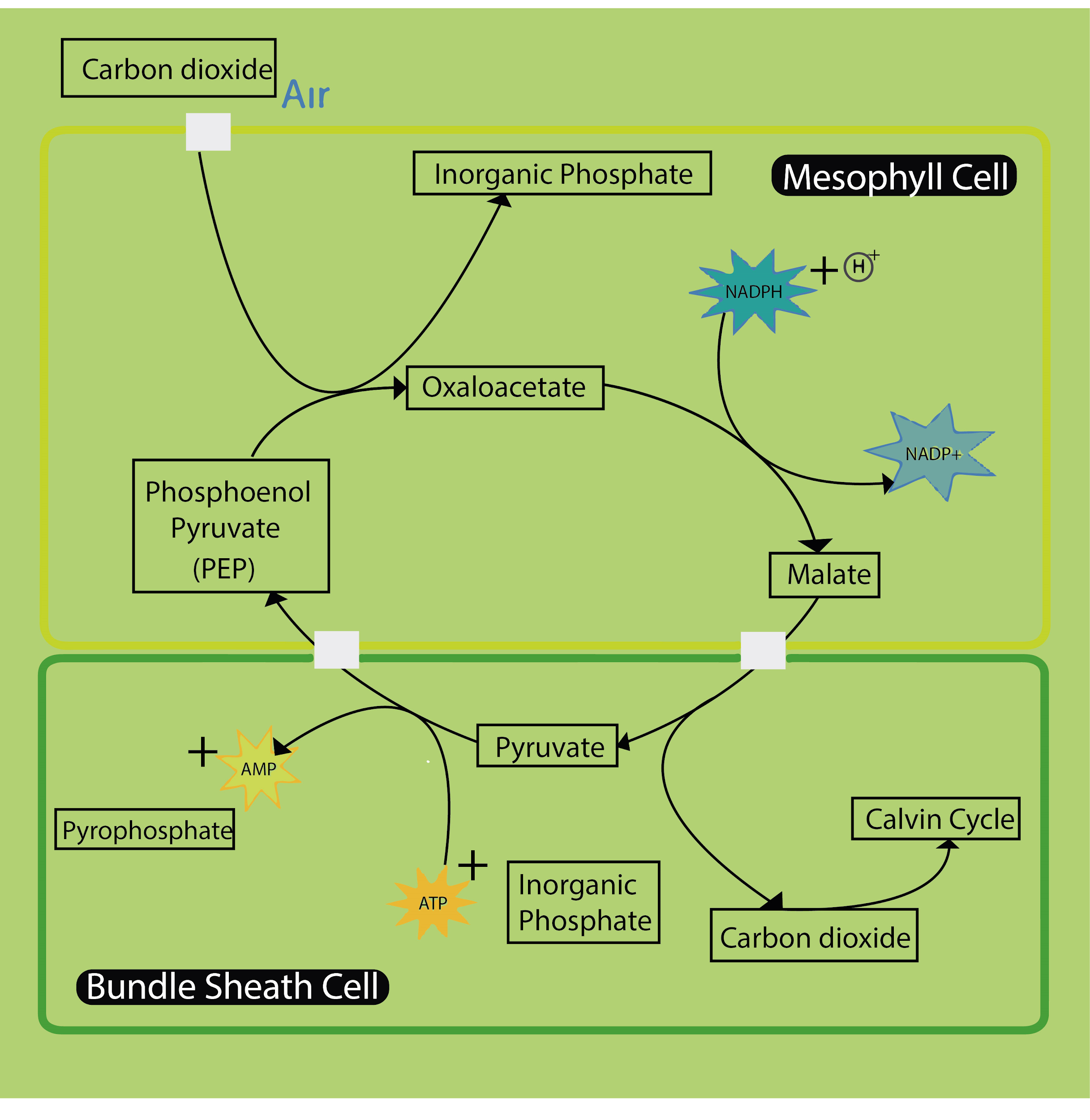
Explain the Hatch-Slack pathway.
Answer
515.7k+ views
Hint: We know that in most of the plants, Oxaloacetic acid which is a 3-carbon containing compound is the first
Complete answer:
The plants which make use of phospho-enol pyruvate (PEP) as the first product of
Let us take a look at this pathway step by step:
- First, phospho-enol pyruvate (PEP) which is present in the mesophyll cells accepts
- After accepting
- This 3-carbon containing molecule is then transported back to mesophyll cells where it again forms PEP and hence one turn of the cycle is completed.
- The
For better understanding, let us take a look at the diagram below –

Note:
Plants that show
Complete answer:
The plants which make use of phospho-enol pyruvate (PEP) as the first product of
Let us take a look at this pathway step by step:
- First, phospho-enol pyruvate (PEP) which is present in the mesophyll cells accepts
- After accepting
- This 3-carbon containing molecule is then transported back to mesophyll cells where it again forms PEP and hence one turn of the cycle is completed.
- The
For better understanding, let us take a look at the diagram below –

Note:
Plants that show
Recently Updated Pages
Master Class 11 Business Studies: Engaging Questions & Answers for Success

Master Class 11 Economics: Engaging Questions & Answers for Success

Master Class 11 Accountancy: Engaging Questions & Answers for Success

Master Class 11 Computer Science: Engaging Questions & Answers for Success

Master Class 11 English: Engaging Questions & Answers for Success

Master Class 11 Maths: Engaging Questions & Answers for Success

Trending doubts
The flightless birds Rhea Kiwi and Emu respectively class 11 biology CBSE

1 litre is equivalent to A 1000mL B 100cm3 C 10mL D class 11 physics CBSE

A car travels 100 km at a speed of 60 kmh and returns class 11 physics CBSE

Name the Largest and the Smallest Cell in the Human Body ?

Explain zero factorial class 11 maths CBSE

In tea plantations and hedge making gardeners trim class 11 biology CBSE




